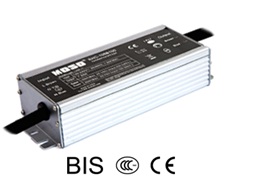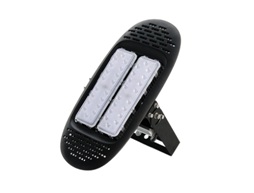The difference between single crystal silicon and polycrystalline silicon is that when molten elemental silicon solidifies, silicon atoms are arranged in a diamond lattice into many crystal nuclei. If these crystal nuclei grow into crystal grains with the same crystal plane orientation, single crystal silicon is formed. If these crystal nuclei grow into crystal grains with different crystal plane orientations, polycrystalline silicon is formed. The difference between polycrystalline silicon and single crystal silicon is mainly manifested in physical properties. For example, in terms of mechanical properties, electrical properties, etc., polycrystalline silicon is not as good as monocrystalline silicon. Polycrystalline silicon can be used as a raw material for drawing monocrystalline silicon. Monocrystalline silicon can be regarded as the purest substance in the world, and general semiconductor devices require the purity of silicon to be more than six and nine. Large-scale integrated circuits have higher requirements, and the purity of silicon must reach nine nines. At present, people have been able to produce single crystal silicon with a purity of twelve nines. Monocrystalline silicon is an indispensable basic material in modern science and technology such as electronic computers and automatic control systems. High-purity silicon is extracted from quartz. Taking single-crystal silicon as an example, refining goes through the following processes: quartz sand-metallurgical-grade silicon-purification and refining-deposition polycrystalline silicon ingot-single-crystal silicon-silicon wafer cutting. The refining of metallurgical grade silicon is not difficult. Its preparation is mainly made of carbon reduced quartz sand in an electric arc furnace. The purity of the silicon reduced in this way is about 98-99%, but silicon for the semiconductor industry must also be highly purified (electronic grade polysilicon purity requires 11 9s, and solar cell grade only requires 6 9s). In the purification process, there is a key technology of the "trichlorosilane reduction method (Siemens method)" that China has not yet mastered. Since this technology is not available, more than 70% of polysilicon in China is discharged through chlorine gas during the refining process. Not only the extraction cost is high, but the environmental pollution is very serious. Every year, China extracts a large amount of industrial silicon from quartz stone and exports it to Germany, the United States, and Japan at a price of $ 1 / kg, and these countries process industrial silicon into high-purity crystalline silicon materials for $ 46-80 The price per kilogram is sold to solar energy companies in China. After obtaining high-purity polycrystalline silicon, it must be smelted into single-crystal silicon in a single-crystal furnace, and then sliced ​​for use in integrated circuit manufacturing. What is monocrystalline silicon It can be used in the production and deep processing of diode-level, rectifier-level, circuit-level and solar cell-level single crystal products. Its follow-up products, integrated circuits and semiconductor separation devices, have been widely used in various fields and also occupy an important position in military electronic equipment. . Today, with the rapid development of photovoltaic technology and micro-miniature semiconductor inverter technology, solar cells produced using silicon single crystals can directly convert solar energy into light energy, realizing the beginning of a green energy revolution. The Beijing 2008 Olympic Games will use the "Green Olympics" as an important display to the world, and the use of monocrystalline silicon will be a very important part of it. Now, foreign solar photovoltaic power plants have reached the stage of theoretical maturity and are transitioning to the stage of practical application. The use of solar silicon monocrystals will be popularized worldwide, and the market demand is self-evident. Hebei Ningjin Monocrystalline Silicon Industrial Park responds to this international trend and provides monocrystalline silicon products with excellent performance and complete specifications for the world. Monocrystalline silicon products include φ3 â€---- φ6†monocrystalline silicon round rods, sheets and square rods and sheets, which are suitable for the production needs of various semiconductor and electronic products. Their product quality has passed the most advanced testing in the world. The instrument was tested and reached the world advanced level.
MOSO Fixed Output LED Driver is a type of compact size, IP67, high quality
LED driver with cost efficiency working in constant current mode. This control
gear is designed for industrial LED light fixtures, like linear or round high
bay, low bay lights, or flood lights, canopy lights in industrial area, or
factories, warehouses.
This Fixed Output LED Driver got global safety certifications, including
UL, CE, TUV, CB, ENEC, SAA, BIS, etc. The LED control gear has universal input
voltage, from 90~305Vac. It is a reliable product compatible with various
application and different countries.
Due to the high IP rating, the LED power supply can be used for dry, damp,
wet locations. It is suitable for built-in a luminaire body, or it can be
installed outside of the fixture. The perfect cooling design can ensure
the product reliability and long lifetime for at least 50,000hours operation at
least) minimum. Drivers with dimming 0~10V & PWM is available.
MOSO grants the product with 5 years global warranty. Customer can refer to
Warranty Policy, find the closest MOSO distributors or sales representatives,
to get a local replacement in case of any failure.
Fixed Output LED Driver Fixed Output LED Driver,Current Fixed Fixed Output LED Driver,Independent Fixed Output LED Driver,Output LED Driver Moso Electronics , https://www.mosoleddriver.com

